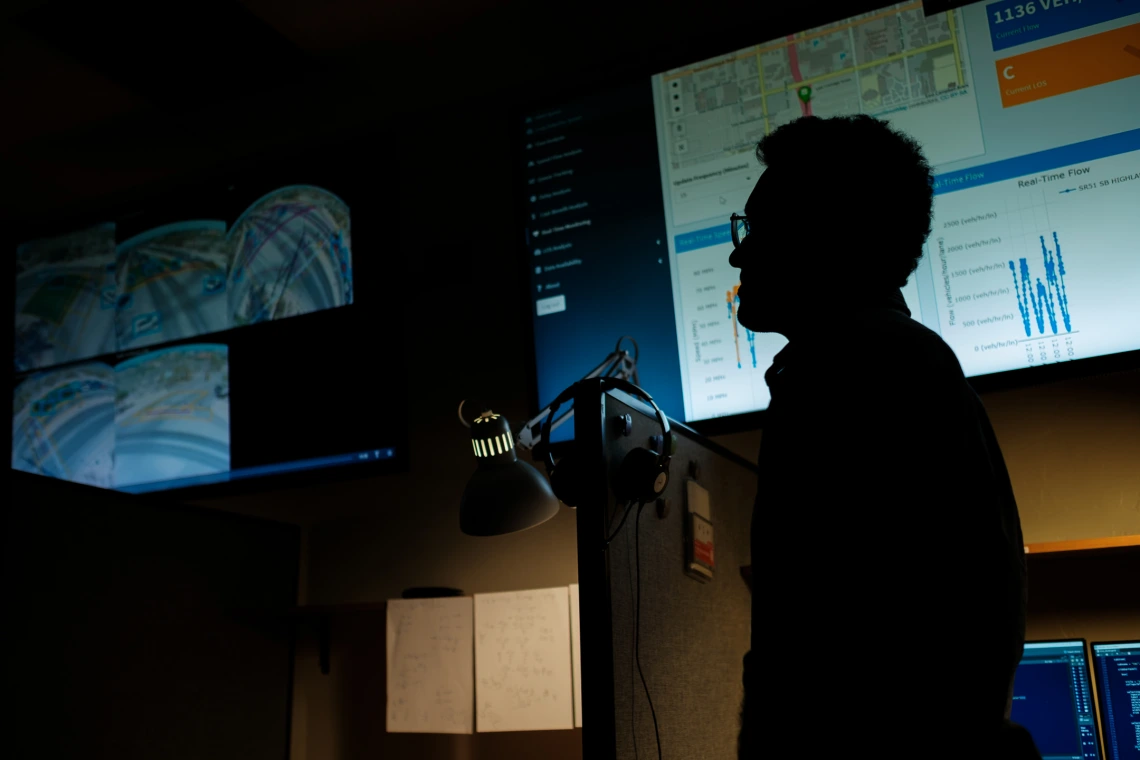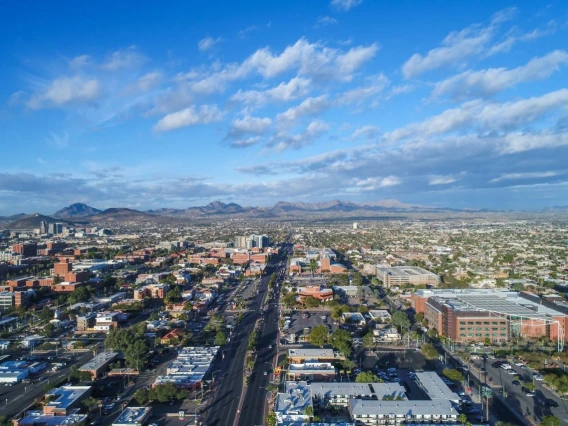Researchers Move Past Conventional Wisdom to Reduce Traffic Congestion
Housed in the College of Engineering, the Center for Applied Transportation Sciences is partnering with state, county and city governments to improve traffic conditions.

Researchers in the Smart Transportation Lab are working to find and develop more efficient modes of travel.
Nobody likes sitting in traffic.
That’s one reason the Center for Applied Transportation Sciences (CATS) at the University of Arizona is bringing together government agencies, private companies and educational institutions to improve transportation systems, with a particular focus on smart cities.
“We want to use data to measure demand in the region so we can make recommendations about how people can adjust their travel behaviors,” said Yao-Jan Wu, center director and associate professor of civil and architectural engineering and mechanics. “Our goal is to combine emerging technologies such as artificial intelligence with existing multimodal infrastructure to make traffic move more efficiently – thereby reducing emissions and preventing people from sitting in congested traffic.”
The center partners with universities, private companies, and government entities throughout Arizona. Its core partners – the Arizona Department of Transportation (ADOT), Pima County and the City of Tucson – provided $400,000 in membership fee funding in fiscal year 2022.
“With the combined resources of government and academia, this team can create technologies to boost safety and efficiency for the traveling public,” said Brent A. Cain, Director of the Transportation Systems Management & Operations Division at ADOT.
Modern Solutions for Age-Old Problems
CATS is focused on using two primary methods: Transportation Systems Management and Operations to make better use of existing resources, rather than building new infrastructure, and Mobility on Demand to provide travelers a combination of public and private transportation options to make their journeys as efficient as possible.
Wu and his team expect their studies to show that Arizona’s roadways have greater capacity than is realized, and they plan to develop strategies for using the existing resources more wisely. The team, which is examining systemic, technical and cultural elements of transportation, envisions solutions that go beyond the conventional wisdom of simply adding more lanes, roads or bridges.
“We are fortunate to have this collaborative relationship with CATS to evaluate and implement transportation management strategies through the use of modern technology,” said Pima County Director of Transportation Ana Olivares. “The vast research resources, and transportation knowledge and experience of CATS staff will be used to advance smart transportation.”
A National Priority
CATS came at a perfect time, as transportation and infrastructure are key priorities for the federal government. In November 2021, the U.S. government passed the Infrastructure Investment and Jobs Act, authorizing $50 million a year for five years for transportation research. The bill is one of several over the past decade centered around improving transportation facilities and research.
“This partnership will allow the city to tap the knowledge of academic professionals in the region, nation and world,” said Blake Richards, interim deputy director of the Department of Transportation and Mobility for the City of Tucson. “These types of partnership opportunities are rare for local government agencies, so we are proud to be a partner. This new organization will assist our department in applying solutions to real-world problems at a fraction of the cost of conventional methods.”
The center joins a lively transportation ecosystem at the University of Arizona, which is also home to the Transportation Research Institute. In the College of Engineering, faculty members are researching connected vehicle technology and radars for autonomous driving, while students get hands-on experience with the CAT Vehicle Research Experience for Undergraduates.
In addition to researching ways to improve transportation, CATS also is committed to training students to enter the workforce. The center is developing new curriculum at the university, and center partners, including government agencies, will host workshops and seminars.
“The most exciting part of this, for me, is a chance to learn about the problems people face every day, and to try to solve these problems in a more intelligent way,” said Abolfazl Karimpour, assistant research professor in civil and architectural engineering and mechanics and core member in the center. “Not only are we thinking about ways to address these public-facing issues, but also we are training future generations of engineering leaders.”
The center also includes faculty members from the Department of Electrical and Computer Engineering, the Department of Systems and Industrial Engineering and the College of Architecture, Planning & Landscape Architecture.
“Engineers are known for being creative problem solvers, and Yao’s approach to evaluating and improving traffic by collaborating with the city, county and state is an excellent example of this,” said David W. Hahn, the Craig M. Berge Dean of the College of Engineering. “Everyone is impacted by transportation in some way, so I look forward to seeing how this center’s work positively affects quality of life for people in Tucson, in Arizona and beyond.”


